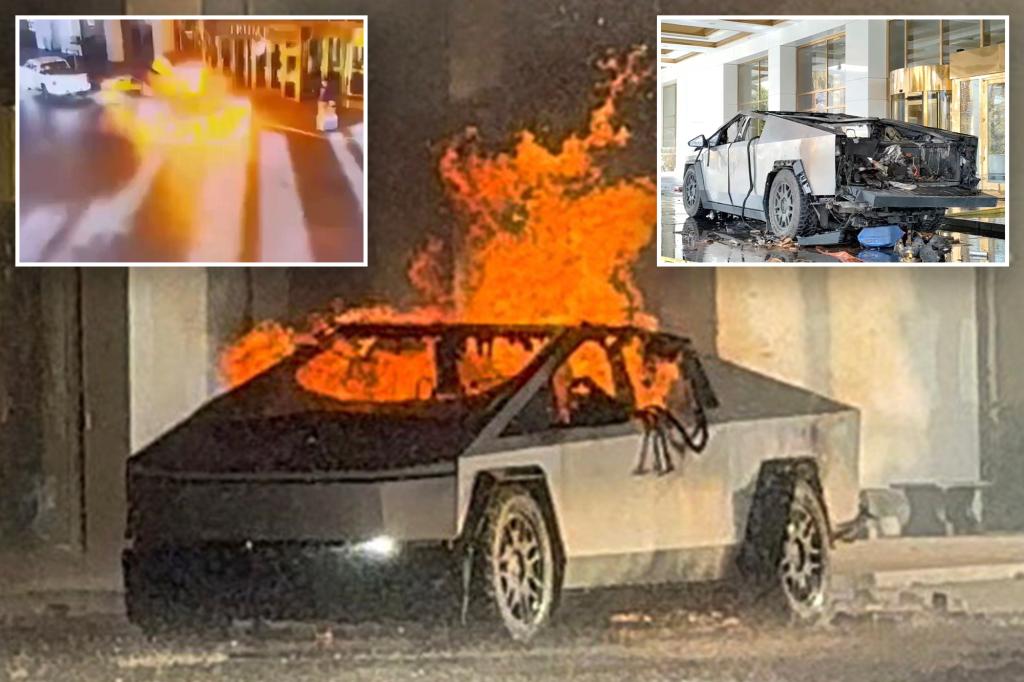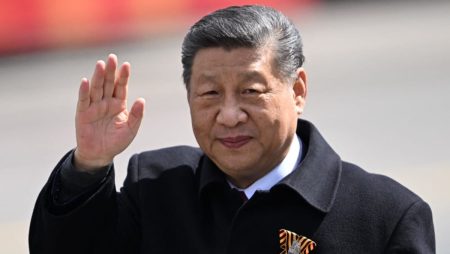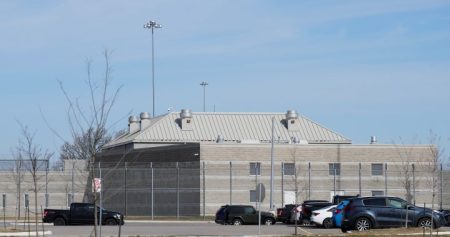The New Year’s Day explosion of a Tesla Cybertruck outside the Trump International Hotel in Las Vegas has taken a somber turn, transforming from a perplexing incident into a potential act of terrorism under investigation by the FBI. The driver, identified as 37-year-old Colorado resident and Army veteran Matthew Livelsberger, perished in the blast, leaving behind a trail of questions and concerns for investigators. The Cybertruck, rented through the peer-to-peer car sharing app Turo, was reportedly laden with an alarming assortment of explosive materials, including firework-style mortars, camping fuel, and canisters, fueling suspicions of premeditated violence. The incident, which resulted in minor injuries to at least seven bystanders, has prompted a swift and comprehensive investigation to determine Livelsberger’s motives and any potential links to other acts of terror.
The timing of the Las Vegas explosion has drawn immediate parallels to a horrific terror attack that unfolded just hours earlier in New Orleans. Shamsud-Din Jabbar, 42, also an Army veteran, used a rented pickup truck acquired through Turo to plow through crowds on Bourbon Street, leaving a devastating toll of at least 15 dead. The chilling similarities in the use of rented vehicles and the perpetrators’ military backgrounds have raised red flags for investigators, prompting the FBI to explore a possible connection between Livelsberger and Jabbar. While the nature of any potential relationship remains unclear, the coinciding incidents have intensified the scrutiny surrounding both cases, highlighting the potential vulnerabilities associated with vehicle rental platforms and the challenges in preventing acts of terrorism.
The investigation into the Las Vegas explosion has focused on unraveling Livelsberger’s background and motivations. Federal agents descended upon at least one of his known residences in Colorado Springs late Wednesday, seeking clues that could shed light on his intentions. While Livelsberger’s father declined to comment when contacted, the investigation is likely to delve into his son’s military service, personal history, and any potential connections to extremist groups or ideologies. The discovery of the explosive materials within the rented Cybertruck raises critical questions about how Livelsberger acquired them and whether he had received any training or assistance in assembling them. Understanding the source of these materials will be crucial in determining the extent of any potential conspiracy and preventing similar incidents in the future.
The parallel investigation into the New Orleans attack is equally focused on understanding Jabbar’s radicalization and the planning that preceded his deadly act. Investigators are meticulously piecing together his movements, communications, and online activity to uncover any clues that might reveal his motivations and any potential accomplices. Both investigations face the complex challenge of determining whether these two separate acts of violence were coordinated or represent isolated incidents of extremism. The potential link between the two perpetrators adds a layer of complexity to both cases, underscoring the importance of interagency collaboration and information sharing between law enforcement agencies.
The use of Turo in both incidents has also brought the peer-to-peer car rental industry under scrutiny. While Turo and similar platforms offer convenient and cost-effective alternatives to traditional rental agencies, the incidents raise concerns about the potential for these services to be exploited by individuals with malicious intent. The ease of renting vehicles without the same level of scrutiny applied by traditional rental companies poses a security challenge that requires careful consideration. The ongoing investigations may lead to calls for enhanced security measures within the peer-to-peer rental industry, including stricter verification processes and improved monitoring of user activity.
The tragic events in Las Vegas and New Orleans serve as a stark reminder of the ever-present threat of terrorism and the evolving tactics employed by those who seek to inflict harm. The investigations into these incidents are likely to be lengthy and complex, requiring meticulous analysis of evidence, extensive interviews, and close collaboration between local, state, and federal agencies. As the investigations unfold, the nation grapples with the difficult task of balancing individual freedoms with the need to enhance security measures to prevent future acts of terror. The answers that emerge from these investigations will not only provide closure to the victims and their families but also inform strategies for countering terrorism and enhancing national security in the years to come.










